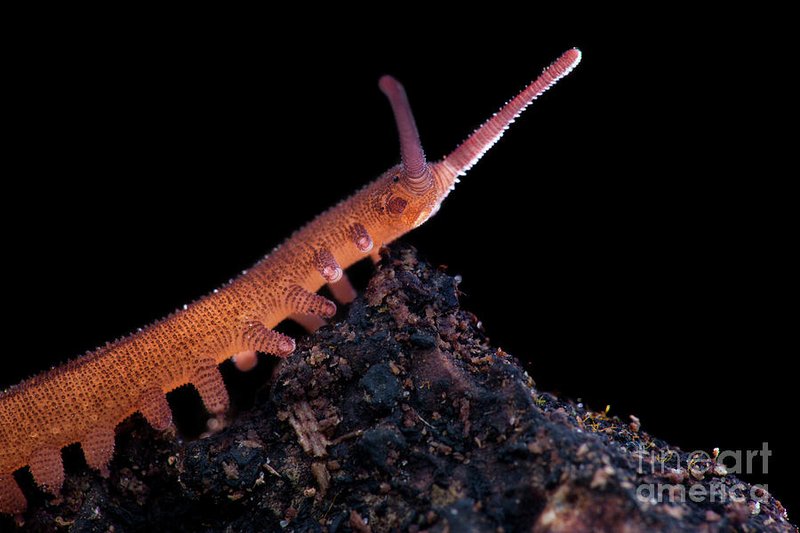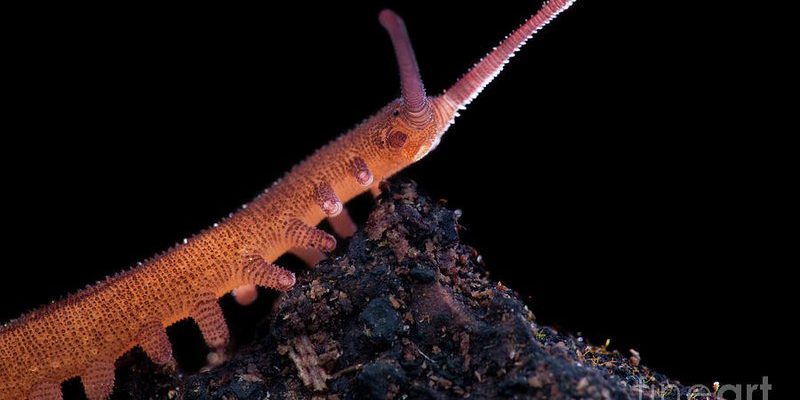
In this guide, I’ll walk you through the steps and techniques to photograph these little wonders while keeping their well-being in mind. We’ll cover everything from gear choices to tips for getting the perfect shot. Plus, I’ll sprinkle in some personal anecdotes and practical advice to make the process easy and enjoyable. So, grab your camera and let’s dive into the world of velvet worms!
Understanding Velvet Worm Behavior
Before you grab your camera, it’s crucial to understand velvet worms and their behavior. These remarkable creatures are mostly nocturnal, meaning they’re most active at night. When the sun goes down, they emerge from their hiding spots in moist, leaf-littered areas to hunt for food, which mainly consists of small insects.
Here’s the thing: velvet worms can be sensitive to disturbances. They have a slow-moving lifestyle and can easily feel threatened. This means if you’re too noisy or sudden in your movements, you might scare them away. To successfully photograph velvet worms, take the time to observe them first. Watch how they move and interact with their environment. Understanding their habits will give you a better chance of getting a stunning shot without causing them stress.
It’s also worth noting that these creatures have a remarkable way of blending into their surroundings. They can camouflage themselves quite well, which can make them tricky to spot. So, if you’re roaming around wooded areas or tropical environments, keep your eyes peeled. The more you know about their behavior and habitat, the better your chances are of capturing a great photo!
Choosing the Right Gear for Velvet Worm Photography
When it comes to photographing velvet worms, having the right equipment is key. You don’t need an expensive DSLR, but a camera that allows for manual settings can be very helpful. If you’re using a smartphone, opt for one with a decent camera that can handle low light situations.
Here are some gear essentials you should consider:
- Macro Lens: A good macro lens or extension tubes will help you capture those intricate details of the velvet worm’s body. The closer you can get to these tiny creatures, the more stunning your images will be.
- Tripod: Since velvet worms move slowly, a tripod can be a lifesaver for stability. It allows you to stay still and focus on composition, particularly in lower light conditions.
- Lighting: Natural light works wonders, but a small portable LED light can help brighten the scene without startling your subject.
- Camera Settings: Make sure your camera is set to a lower ISO if you’re shooting in dim conditions. A shutter speed of at least 1/60th of a second is advisable to reduce blur from camera shake.
With the right gear in your hands, you’ll feel more prepared and confident when you finally spot your velvet worm.
Finding Velvet Worms in Their Natural Habitat
So, where can you find velvet worms? These creatures typically inhabit humid, forested areas. If you’re in the right environment, look underneath logs, stones, and leaf litter. They love damp spots, so searching during or after rainfall can increase your chances of spotting them.
Here’s a little tip: try searching around midnight or just after sunset. Velvet worms tend to be more active at night, making them easier to photograph. Bring a flashlight (with a red filter if you have one) to avoid startling them with bright white light.
Understanding the ecosystem around you is also important. Velvet worms thrive in areas rich with decaying organic matter, so look for places that are lush and slightly damp. If you find a good spot, sit quietly and wait. Sometimes patience is the secret ingredient to capturing that perfect shot.
Approaching Velvet Worms Gently
When you finally spot a velvet worm, it’s time to approach it. Remember, we’re trying to photograph these little guys, not scare them off. The key is to be as quiet and slow as possible. Think about how you would approach a startled animal; you wouldn’t want to spook it away.
Here’s how to do it:
1. **Observe First:** Take a moment to watch it from a distance. This will help you gauge its level of comfort. If it seems to be moving steadily, that’s a good sign.
2. **Slow Movements:** Move in slowly and smoothly. Avoid sudden movements, as they can startle the worm and cause it to retreat.
3. **Mind Your Shadows:** Pay attention to your shadows. Velvet worms might get spooked if they feel a looming threat above them, so position yourself carefully.
4. **Keep Noise to a Minimum:** Speaking softly and avoiding any loud rustles in your clothing can make a big difference in keeping the atmosphere calm.
With these strategies in mind, you’ll be much more likely to capture incredible photos of these elusive creatures.
Composition Tips for Stunning Velvet Worm Photos
Now that you’re close to a velvet worm, it’s time to think about composition. This is where you can really show off the beauty of these unique creatures. Here are some tips to help you create visually appealing photos:
– **Focus on Details:** Velvet worms have fascinating textures and colors. Zoom in to capture the details of their soft bodies and tiny legs. A close-up can reveal their unique features beautifully.
– **Use the Rule of Thirds:** Imagine your frame divided into nine equal parts. Place the velvet worm off-center, following the rule of thirds, to create a more dynamic composition.
– **Include Surroundings:** Sometimes, it’s great to include a bit of the environment in your shots. This adds context and helps tell a story about where these creatures live.
– **Experiment with Angles:** Don’t be afraid to move around and change angles. Different perspectives can lead to unique images. Try shooting from above or getting down low to their level.
Remember, the goal is to showcase the velvet worm in its natural setting while maintaining a sense of wonder. Each photo tells a story, so think about what you want yours to convey.
Post-Processing Your Velvet Worm Photos
After you’ve captured your stunning shots, it’s time to think about editing. Post-processing can enhance your images and bring out the best in your velvet worm photographs.
**Here are some basic tips for editing:**
– **Adjust Brightness and Contrast:** Make your images pop by adjusting the brightness and contrast. This helps to reveal more details in the velvet worm’s body.
– **Crop for Impact:** Sometimes a simple crop can transform your image. Focus on the most interesting parts of the photo.
– **Color Correction:** If your colors look off, don’t hesitate to tweak them. Velvet worms have unique hues that you’ll want to get just right.
– **Sharpen Details:** A little sharpening can go a long way in highlighting the textures of the velvet worm, making your photos even more captivating.
Editing doesn’t have to be complex. Just remember that your goal is to enhance the natural beauty of the velvet worms you’ve photographed.
Respecting Velvet Worms and Their Habitat
As you enjoy photographing velvet worms, it’s essential to maintain a respectful attitude toward these creatures and their environment. Remember, they play a critical role in their ecosystem by helping control insect populations and breaking down organic matter.
Here are some practices to keep in mind:
– **Limit Handling:** Try not to touch the velvet worms or remove them from their environment. Your goal is to observe and document, not disrupt their lives.
– **Leave No Trace:** Always clean up after yourself. Avoid leaving trash or disturbing the natural habitat, as this can harm the delicate ecosystem where these creatures thrive.
– **Share Your Knowledge:** If you’re passionate about your discoveries, share what you’ve learned with others. Educating your friends or fellow photographers about velvet worms can inspire them to approach nature with care.
Ultimately, your photographs should reflect not only the beauty of these little creatures but also the importance of preserving their natural habitats.
In conclusion, photographing velvet worms can be a rewarding experience, and with a little patience and care, you can capture their beauty without disrupting their world. Remember to respect them and enjoy the journey. Happy shooting!

